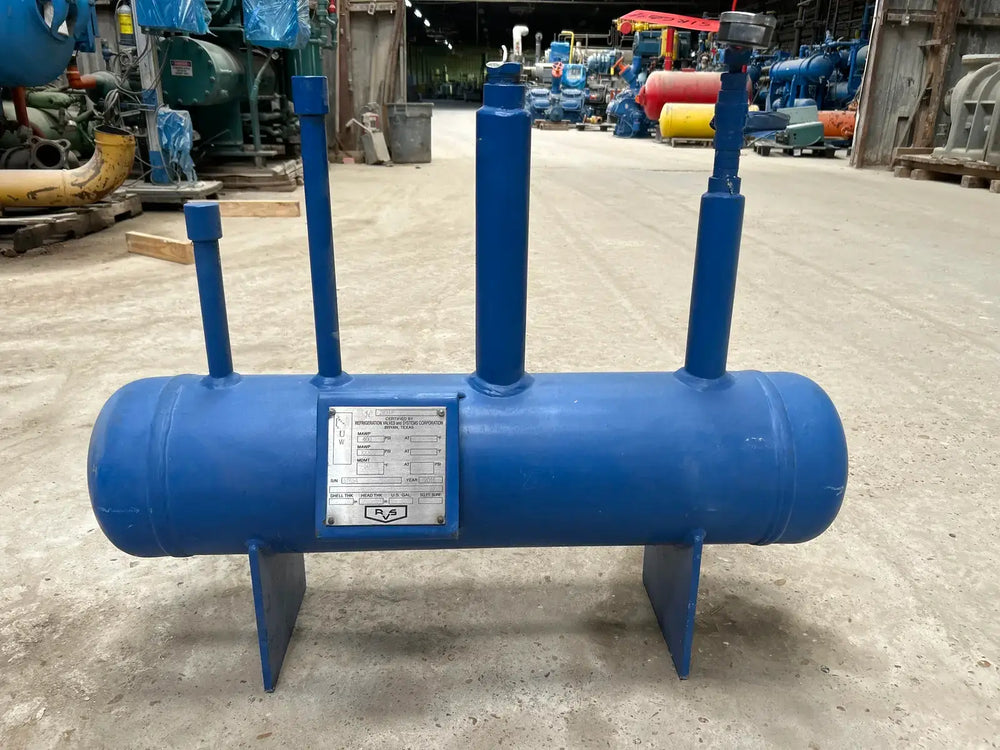Ammonia refrigeration systems are integral in various industries, notably in food processing and storage, pharmaceuticals, and chemical manufacturing. These systems rely on specialized components to ensure the efficient and safe operation of chilling mechanisms. Among these components, the ammonia receiver plays a pivotal role by acting as a storage reservoir for ammonia refrigerant. Understanding the importance and intricacies of this vital equipment can enhance safety, maximize performance, and ensure longevity in industrial refrigeration. Below, we delve into the essentials of ammonia receivers and their significance in refrigeration systems.
Understanding the Role of Ammonia Receivers in Refrigeration Systems
Ammonia receivers play a vital role in refrigeration systems by storing excess refrigerant and ensuring a steady supply for the compressor. Positioned downstream of the condenser, they separate vapor from liquid ammonia, allowing only the liquid to reach the evaporator. This process prevents compressor damage and supports efficient heat absorption for stable operation.
An ammonia receiver can enhance safety by accommodating pressure surges and purging non-condensable gases that could affect efficiency. They also simplify maintenance by eliminating the need to evacuate refrigerant during repairs, reducing environmental impact and supporting sustainability efforts.
Key Features of Industrial Ammonia Receivers
Industrial ammonia receivers are designed for large-scale refrigeration and high-pressure scenarios. They are made from high-grade materials that can withstand the corrosive nature of ammonia and are designed to operate efficiently across a range of temperatures. They maintain optimal refrigerant temperatures, minimize energy loss, and ensure system effectiveness. Safety valves and gauges monitor pressure and facilitate regular maintenance checks.
Ammonia receivers come in various sizes to cater to different system capacities and layouts, ensuring compatibility with diverse system configurations. They are also designed with sustainability and compliance in mind, incorporating features like dual relief valves and fail-safe mechanisms to prevent accidental release of ammonia into the environment. These receivers are essential for efficient and effective refrigeration systems.
Installation and Maintenance Guidelines for Ammonia Receivers
The installation of ammonia receivers is crucial for the optimal operation of a refrigeration system. The receiver should be easily accessible for maintenance and inspection, supported to manage its weight, and properly integrated into the system. Regular maintenance is essential for prolonging the receiver’s life and maintaining system efficiency. This includes inspecting for signs of corrosion or damage, verifying pressure gauge accuracy, and checking safety valves.
Regular purging of non-condensable gases is also essential to maintain cooling efficiency. Scheduled purging should be part of the receiver’s maintenance routine, following manufacturer recommendations. Safety protocols for handling ammonia during servicing, including the use of protective gear and well-ventilated work areas, are also essential.
The Impact of Ammonia Receiver Sizing on System Efficiency
The size of an ammonia receiver significantly impacts the efficiency of a refrigeration system. Undersized receivers can cause disruptions during peak loads or maintenance, while oversized receivers can increase the amount of refrigerant in the system, leading to higher operational costs and complexity. Proper sizing considers the maximum refrigerant charge, system parameters, and future expansion needs to ensure smooth operation, energy conservation, and cost-effectiveness.
Simulation models and design software can help predict system behavior and appropriately size the receiver, creating a balanced system without resource wastage. The ideal size of an ammonia receiver may change over time, so re-evaluating it is crucial for maintaining system efficiency and reliability during system upgrades or expansions.
Compliance and Safety Considerations for Ammonia Refrigeration Systems
Ammonia refrigeration systems must adhere to industry standards and safety regulations set by regulatory bodies like OSHA and EPA in the US. These standards ensure the safe design and operation of equipment, preventing penalties and ensuring personnel safety. Safety considerations include regular training for operators, adequate ventilation and leak detection systems, and personal protective equipment.
Proper safety labeling and compatibility with ammonia material are also crucial. Emergency procedures should be known to all staff, and drills and training should be conducted regularly. Thorough documentation of systems and maintenance procedures contributes to a safety culture. Environmental regulations apply to ammonia handling and containment, favoring system designs that promote closed-circulation and minimal refrigerant loss.
Overall, industrial ammonia receivers are indispensable to the functionality and safety of refrigeration systems. Through meticulous installation, regular maintenance, correctly sizing the receiver, and strict adherence to safety and compliance protocols, the longevity and efficiency of refrigeration operations can be considerably enhanced. This thoughtful approach to system management and component selection safeguards both the workforce and the environment while ensuring uninterrupted business operations.



